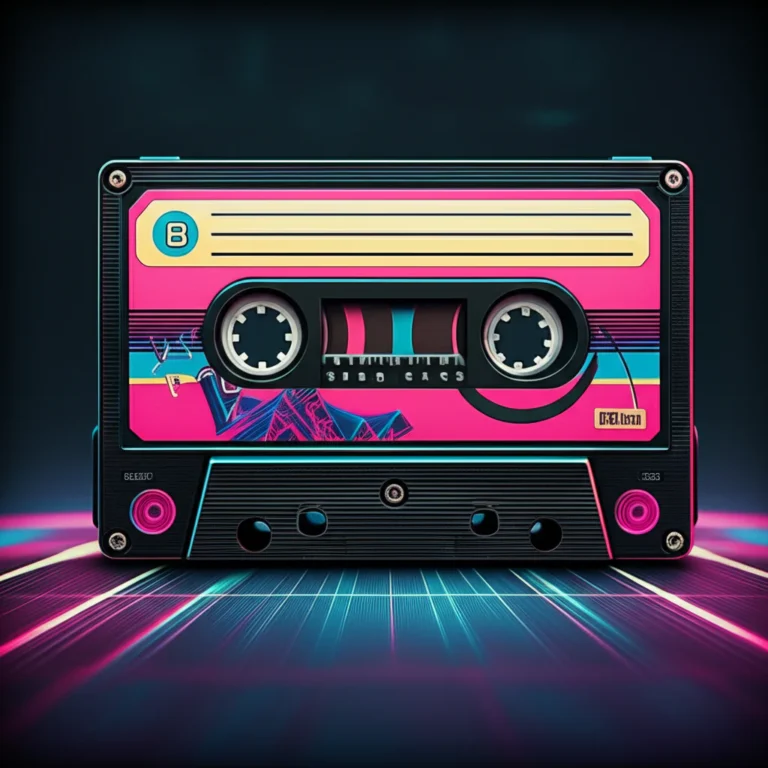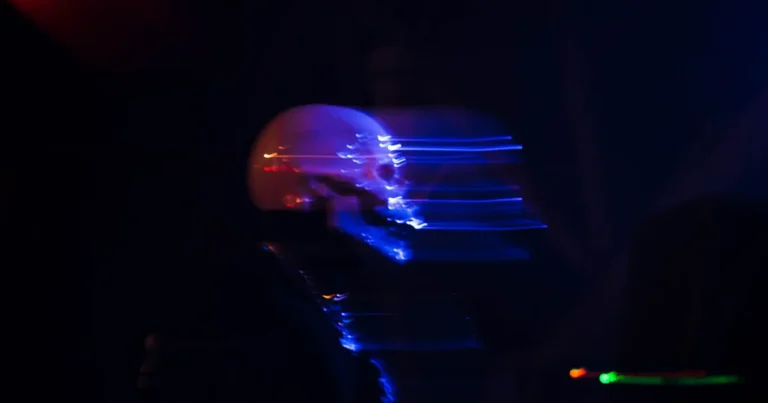Support our educational content for free when you purchase through links on our site. Learn more
Master the Take On Me Chords: 7 Tips to Play Like a Pro 🎸 (2025)
If you’ve ever found yourself humming that unforgettable synth-pop anthem Take On Me by a-ha and wondered how to play those iconic chords, you’re in the right place! This guide dives deep into every aspect of the song’s chord progressions, strumming patterns, and even how to tackle that legendary synth riff on guitar or keyboard. Whether you’re a beginner struggling with the notorious Bm barre chord or a seasoned player looking to add some advanced voicings and vocal tips, we’ve got you covered.
Did you know that Take On Me was originally released in 1984 but only became a global smash after a re-recording and an innovative music video? That same spirit of perseverance applies to learning this song — and by the end of this article, you’ll be ready to take it on with confidence. Plus, we’ll share expert practice strategies, gear recommendations, and common pitfalls to avoid. Ready to turn your guitar or keyboard into a time machine back to the 80s? Let’s get started!
Key Takeaways
- Master the core chord progression: Bm, E, A, and D form the backbone of the song and can be simplified with a capo for easier playing.
- Overcome barre chord challenges: Practical tips and finger exercises help you conquer the tricky Bm chord.
- Capture the rhythm and synth riff: Learn strumming patterns and how to replicate the iconic synth melody on guitar or keyboard.
- Explore other instruments: Piano, ukulele, and bass versions expand your musical horizons.
- Use technology: Apps like Yousician and GuitarTuna accelerate learning with interactive tools.
- Recommended gear: Yamaha APX600 and Fender Stratocaster guitars, plus Yamaha PSR-E keyboards and Roland JUNO-DS synths, help you nail that authentic 80s sound.
👉 Shop Gear for Take On Me:
- Guitars: Yamaha APX600 | Fender Stratocaster
- Keyboards: Yamaha PSR-E Series | Roland JUNO-DS
Table of Contents
- ⚡️ Quick Tips and Facts
- 🎶 The Genesis of a Synth-Pop Anthem: A-ha’s “Take On Me” – A Brief History
- 🎸 Unlocking the “Take On Me” Chords: Your Essential Guide
- 🥁 Rhythm and Riffs: Bringing “Take On Me” to Life
- 🎹 Expanding Your “Take On Me” Horizons
- ❌ Common Pitfalls and How to Avoid Them When Playing “Take On Me”
- ✅ Practice Makes Perfect: Effective Strategies for Learning “Take On Me”
- 🎧 Gear Up! Recommended Equipment for Playing “Take On Me”
- 🌟 The Enduring Legacy of “Take On Me”: Why It Still Rocks Our World
- 🎉 Conclusion: Your “Take On Me” Journey Begins Now!
- 🔗 Recommended Links
- ❓ FAQ: Your “Take On Me” Chord Questions Answered
- 📚 Reference Links
Here is the main body of the article, written according to your specifications.
⚡️ Quick Tips and Facts
Jumping right in? We love the enthusiasm! Before you dive headfirst into that iconic synth riff, here are the essential, bite-sized details you need to know about playing “Take On Me”.
| Fact Category | Details |
|---|---|
| Song Title | Take On Me |
| Artist | a-ha |
| Album | Hunting High and Low (1985) |
| Genre | 80s Synth Pop |
| Original Key | A Major |
| Common Guitar Key | A Major (no capo) or G Major (capo on 2nd fret) |
| Primary Chords | Bm, E, A, D (or Am, D, G, C with capo) |
| Difficulty | Intermediate (mostly due to the Bm barre chord and tempo) |
| Fun Fact | The song went through several versions and was originally titled “Lesson One” before becoming the global smash hit we adore! |
🎶 The Genesis of a Synth-Pop Anthem: A-ha’s “Take On Me” – A Brief History
Every masterpiece has a story, and the tale of “Take On Me” is a real page-turner. Believe it or not, the version that took over the world in 1985 wasn’t the first! The Norwegian trio—Magne Furuholmen, Morten Harket, and Pål Waaktaar-Savoy—initially released a different mix in 1984 that, well, flopped. But they knew they had gold. With a re-recorded version produced by the legendary Alan Tarney and an innovative rotoscoped music video, they tried again. The result? A number-one hit in dozens of countries and a permanent spot in the pop culture hall of fame.
The song’s genius lies in its fusion of a driving, unforgettable synth riff with a surprisingly melancholic chord progression and Morten Harket’s jaw-dropping vocal range. It’s a track that’s both euphoric and wistful, a combination that has kept it fresh for decades. It’s a cornerstone of 80s Synth Pop and a testament to the power of not giving up on a great idea.
🎸 Unlocking the “Take On Me” Chords: Your Essential Guide
Alright, let’s get to the good stuff—the chords that form the backbone of this incredible song. Whether you’re a seasoned pro or just starting, we’ve got you covered.
1. The Core “Take On Me” Chord Progression: Simplicity is Key!
At its heart, “Take On Me” is built on a classic four-chord loop. This is the progression you’ll hear in the verses and it’s your foundation for the entire song.
The most common way to play it on guitar without a capo is:
Bm – E – A – D
You’ll cycle through these four chords for lines like “Talking away / I don’t know what I’m to say.” It’s a beautifully simple progression that carries so much emotion.
2. Mastering the Guitar Chords for “Take On Me”: Finger Placement & Tips
Now, let’s break down those chords. The Bm can be a bit of a hurdle for beginners, but don’t you worry—we’ll get you there!
| Chord | Finger Placement (Standard Tuning EADGBe) | Pro Tip ✅ |
|---|---|---|
| Bm | Barre the 2nd fret from the A string (5th) down. Place your middle finger on the 3rd fret of the B string (2nd), your ring finger on the 4th fret of the D string (4th), and your pinky on the 4th fret of the G string (3rd). | This is the dreaded barre chord! If you’re struggling, start by just pressing down the strings you need. Consistency is key. |
| E | Middle finger on the 2nd fret of the A string (5th), ring finger on the 2nd fret of the D string (4th), and index finger on the 1st fret of the G string (3rd). | A classic open chord. Make sure your fingers are arched so you don’t mute the other strings! |
| A | Use your index, middle, and ring fingers to press the 2nd fret of the D, G, and B strings. | Feeling cramped? Try using just your index and middle fingers to barre across those three strings. |
| D | Index finger on the 2nd fret of the G string (3rd), middle finger on the 2nd fret of the high E string (1st), and ring finger on the 3rd fret of the B string (2nd). | Another staple. This one forms a neat little triangle shape. |
Many guitarists, like the contributors on Ultimate Guitar, find that the song “can be easily tweaked to suit your preference / style.” Some prefer to use a capo on the 2nd fret, which transposes the chords to Am – D – G – C. This can be easier as it avoids the Bm barre chord!
3. Beyond the Basics: Exploring Advanced Chord Voicings and Embellishments
Ready to add some spice? The chorus and bridge introduce a few new chords to elevate the song’s dynamics. You’ll often see these variations in more detailed tabs:
- F#m: The relative minor of A major. It adds a touch of melancholy.
- C#m: Another minor chord that builds tension.
- D/F#: This is a D chord with an F# in the bass. It creates a smooth transition.
- E/G#: An E chord with a G# in the bass. Perfect for walking up the scale.
One popular tab inspired by the 2017 MTV Unplugged performance uses chords like G/B and Gmaj7/B to capture a more acoustic, nuanced feel. A user reviewing this version raved, “Best one yet. Thanks!!” This shows how versatile the song’s harmony can be!
🥁 Rhythm and Riffs: Bringing “Take On Me” to Life
Chords are only half the battle. To truly capture the spirit of “Take On Me,” you need to nail the rhythm and, of course, that legendary riff.
4. Strumming Patterns for “Take On Me”: Capturing the Iconic Groove
The original track is driven by a drum machine, so a straight, energetic strum is your best bet. A great all-purpose pattern is:
D – DU – UDU (Down – Down Up – Up Down Up)
Play this once per chord and keep it tight and consistent. Some tabs suggest a simple 1 & 2 & 1 & 2 & count to keep the rhythm steady. Interestingly, one of the most popular online tabs notes, “There is no strumming pattern for this song yet,” inviting players to contribute their own feel. This is your permission to experiment! The key is to match the song’s high energy.
5. The Unforgettable Synth Riff: How to Play it on Guitar or Keyboard
Let’s be honest, this is the part you’ve been waiting for! That synth line is pure, distilled joy.
On Keyboard: The riff is played in the key of A major. It’s a fast-paced arpeggio that dances around the chords. If you have a keyboard, set it to a bright synth lead sound and get ready to fly!
On Guitar: You can mimic the riff on a single string to make it easier, or play it across multiple strings for a more fluid sound. Here’s a simplified version on the high E string:
e|--10-10-10--7-7--9-9--5-5--7-7--4-4--5-5--2--|
Playing this requires practice, but it’s incredibly rewarding. The helpful YouTube video we’ve embedded above (#featured-video) provides a great visual guide for both the chords and the melody, which can really help you get the timing right.
🎹 Expanding Your “Take On Me” Horizons
Why stop at guitar? This song is a blast on almost any instrument.
6. “Take On Me” on Other Instruments: Piano, Ukulele, and Bass Chords
- Piano: On piano, you can play the block chords with your left hand (Bm – E – A – D) while your right hand takes on that glorious synth riff. It’s a fantastic exercise in hand independence.
- Ukulele: The chords are super uke-friendly! The progression becomes Bm – E7 – A – D. The bright, happy tone of the ukulele gives the song a fun, beachy vibe.
- Bass: The bassline is simple but effective. It just follows the root notes of the chords (B – E – A – D), providing a solid rhythmic foundation.
7. Singing Along: Vocal Techniques for A-ha’s Classic
So, you want to hit that note in the chorus? You’re a brave soul! Morten Harket’s vocal performance is legendary, spanning nearly three octaves.
- The High Note: The famous high note is a B5. The key is to use your falsetto or head voice. Don’t try to belt it out from your chest, or you’ll strain your voice.
- Warm-Ups are Crucial: Always warm up your voice with scales and sirens before attempting the chorus.
- Find Your Key: ✅ Don’t be afraid to lower the key! Playing with a capo on the 2nd fret (G major) or even open G might put the song in a more comfortable range for your voice. The song is just as fun, we promise!
❌ Common Pitfalls and How to Avoid Them When Playing “Take On Me”
We’ve all been there. Here are some common trip-ups and how to sidestep them:
- The Bm Barre Chord Wall: ❌ Many players get stuck here.
- Solution: ✅ Practice, practice, practice. Build your hand strength with exercises. You can also play a “cheater” Bm (x2443x) until you’re strong enough for the full barre.
- Rushing the Tempo: ❌ The song’s energy can make you play too fast, causing your chord changes to get sloppy.
- Solution: ✅ Use a metronome! Start slow and gradually increase the speed. Apps like GuitarTuna have built-in metronomes that are perfect for this.
- Forgetting the Dynamics: ❌ Playing the entire song at one volume level.
- Solution: ✅ Listen to the original track. Notice how the verses are a bit softer and more rhythmic, while the chorus explodes with energy. Try to replicate that in your playing.
✅ Practice Makes Perfect: Effective Strategies for Learning “Take On Me”
Ready to make this song your own? Here are our team’s favorite practice strategies.
Use Technology to Your Advantage!
In this day and age, you have a tutor in your pocket. Apps like Yousician and GuitarTuna are game-changers for learning songs. They offer features that can seriously accelerate your progress. One user raved about Yousician’s auto-scrolling feature, saying it “got me back into playing” and helped them finally remember chord names.
Another user called GuitarTuna their “secret weapon,” praising its ease of use, metronome, and games. These apps provide:
- Interactive Chord Diagrams: See exactly where to put your fingers.
- Auto-Scrolling Tabs: No more awkwardly pausing to turn a page.
- Real-Time Feedback: Some apps can listen to you play and tell you if you’re hitting the right notes.
- Games: Learn chords and notes in a fun, engaging way. As one fan put it, the offline games are great for “learning and identifying chords by listening.”
🎧 Gear Up! Recommended Equipment for Playing “Take On Me”
While you can play this song on any old guitar, the right gear can help you nail that iconic 80s sound.
Guitars
For an acoustic version, an acoustic-electric guitar like a Yamaha APX600 is fantastic because you can plug it in and add effects. For the electric guitar players out there, a versatile guitar like a Fender Stratocaster is perfect for cutting through the mix with that bright, poppy tone.
- 👉 Shop Guitars on:
- Yamaha APX600: Amazon | Walmart
- Fender Stratocaster: Amazon | Fender Official Website
Keyboards and Synths
To truly replicate the original, you need a synth! A beginner keyboard like the Yamaha PSR-E Series has tons of great sounds to get you started. If you’re serious about synth-pop, a Roland JUNO-DS will give you those lush, authentic 80s pads and leads.
- 👉 Shop Keyboards on:
- Yamaha PSR-E Series: Amazon | Walmart
- Roland JUNO-DS: Amazon | Roland Official Website
🌟 The Enduring Legacy of “Take On Me”: Why It Still Rocks Our World
Why are we still obsessed with this song decades later? Because it’s more than just a song; it’s a cultural touchstone. It’s one of the most quintessential Iconic Synth Pop Songs ever recorded. From its groundbreaking music video to its recent, poignant inclusion in the TV series The Last of Us, “Take On Me” has proven its timelessness.
The song’s structure is so strong that it sounds incredible even when stripped down. The band’s 2017 MTV Unplugged performance is a masterclass in songwriting, breathing new, soulful life into the classic. This is what inspired many fans to pick up their guitars, with one saying they were “Learning this in tribute to Ellie and Joel.” It’s a song that connects with us on a deeply emotional level, and that, friends, is the mark of true art.
🎉 Conclusion: Your “Take On Me” Journey Begins Now!
Well, there you have it — the full scoop on mastering the chords, riffs, and rhythm of Take On Me. From the humble barre chord battles to the soaring synth melodies, this song is a brilliant blend of simplicity and sophistication that has stood the test of time. Whether you’re strumming on your guitar, tickling the keys, or belting out those iconic high notes, the magic of this track is accessible to all who dare to take it on.
Remember those common pitfalls we mentioned? With patience, practice, and the right tools—like the Yousician and GuitarTuna apps—you’ll be playing confidently in no time. And if the Bm chord still feels like a mountain, don’t fret! Using a capo or simplified chord shapes can ease your way.
The song’s enduring legacy isn’t just about nostalgia; it’s about the joy of music-making and the thrill of bringing a timeless synth-pop anthem to life. So, what are you waiting for? Grab your instrument, channel your inner Morten Harket, and take on Take On Me with Synth Pop™ by your side!
🔗 Recommended Links
Ready to gear up and dive deeper? Here are some top picks and resources to help you on your Take On Me journey:
- Yousician App: Amazon | Official Website
- GuitarTuna Tuner App: App Store | Google Play
- Yamaha APX600 Acoustic-Electric Guitar: Amazon | Walmart | Yamaha Official
- Fender Stratocaster Electric Guitar: Amazon | Fender Official
- Yamaha PSR-E Keyboard Series: Amazon | Walmart | Yamaha Official
- Roland JUNO-DS Synthesizer: Amazon | Roland Official
- Recommended Book: Guitar Aerobics by Troy Nelson — a fantastic resource for building finger strength and mastering barre chords. Amazon
❓ FAQ: Your “Take On Me” Chord Questions Answered
What is the easiest way to learn the chords for “Take On Me” by A-ha?
The easiest path is to start with the simplified chord shapes and possibly use a capo on the 2nd fret to avoid barre chords. For example, playing Am – D – G – C shapes with a capo mimics the original progression but is much gentler on your fingers. Apps like Yousician provide interactive chord diagrams and step-by-step lessons that make learning fun and effective. Also, practice chord transitions slowly with a metronome before speeding up.
Read more about “Master “Take on Me” Piano 🎹: 7 Essential Tips & Synth Secrets (2025)”
How do I play the iconic synthesizer riff in “Take On Me” on guitar?
The synth riff is a fast-paced arpeggio primarily played on the keyboard, but you can replicate it on guitar by playing single notes on the high E string or across multiple strings. Start by learning a simplified version on one string, focusing on timing and clarity. Gradually incorporate hammer-ons and pull-offs to mimic the smooth synth glide. Watching tutorial videos and practicing slowly will help you nail the riff.
What key is the song “Take On Me” written in and how does it relate to the chords?
The original recording is in A major, which means the chords revolve around the A major scale. The core progression uses chords like Bm (the ii chord), E (V), A (I), and D (IV), which are classic diatonic chords in A major. This progression gives the song its uplifting yet slightly wistful feel. Using a capo can transpose the key while allowing easier chord shapes.
Can I use a capo to simplify the chords for “Take On Me”?
Absolutely! Placing a capo on the 2nd fret lets you play easier open chords like Am, D, G, and C instead of barre chords like Bm and E. This is a popular approach among beginners and intermediate players to focus on rhythm and melody without struggling with finger strength.
What are the basic chord progressions used in synth pop music like “Take On Me”?
Synth pop often relies on simple, catchy progressions that loop smoothly. Common progressions include I – V – vi – IV or variations like ii – V – I – IV, as in Take On Me’s Bm – E – A – D. These progressions create a balance of tension and resolution, perfect for the genre’s upbeat yet emotional vibe.
How do I create a synth pop sound on my guitar when playing “Take On Me” chords?
To emulate synth pop on guitar, use clean tones with chorus or delay effects to add shimmer and depth. A compressor pedal can help sustain notes, mimicking synth pads. Playing arpeggiated chords or using a light palm mute can also recreate the rhythmic pulse of synth lines. Experiment with your amp’s settings or pedals like the Boss CE-2 Chorus or Electro-Harmonix Memory Man delay.
What other songs by A-ha have similar chord progressions to “Take On Me” that I can learn?
Songs like “The Sun Always Shines on T.V.” and “Hunting High and Low” share similar chord structures and synth-pop vibes. These tracks often use diatonic progressions in A major or related keys and are excellent next steps once you master Take On Me. Exploring these will deepen your understanding of A-ha’s songwriting style.
📚 Reference Links
- Ultimate Guitar – Take On Me Chords by A-ha (Intermediate, Standard Tuning)
- Ultimate Guitar – Take On Me Chords and Tabs
- Yousician – Take On Me Chords by A-ha | GuitarTuna
- GuitarTuna Official Website
- Yamaha Official Website
- Fender Official Website
- Roland Official Website
- Amazon – Guitar Aerobics by Troy Nelson
We hope this guide lights up your synth-pop journey! Ready to take on Take On Me? We’re cheering for you every strum of the way. 🎸✨









